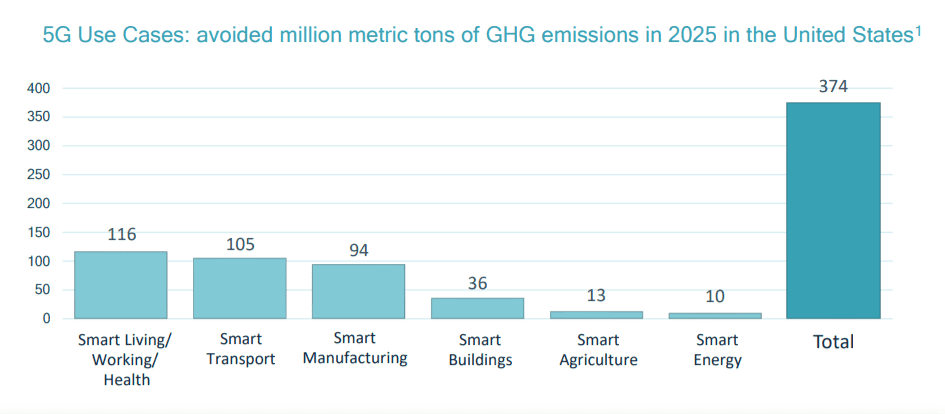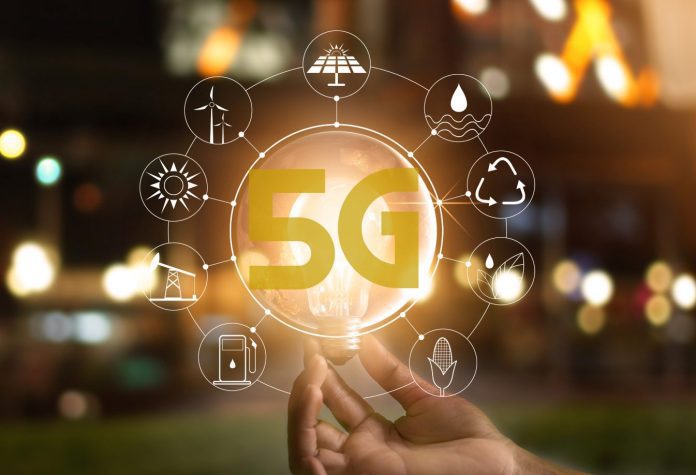The clamour from the telecoms industry for governments and regulators to ease and encourage further 5G rollout is getting louder. Following on the heels of Vodafone’s call-to-arms last week in the UK, for the government to write targets and incentives for 5G and IoT adoption into its forthcoming net-zero strategy blueprints, US chipmaker Qualcomm has said the same, effectively, calling for joint efforts by industry and government to accelerate 5G adoption.
The San Diego semiconductor giant has made noise on the back of research highlighting the “many ways” 5G stands to drive environmental sustainability, as well as economic growth. It also said the money-making opportunity for the broad tech sector should not be missed, with a carve-up $350 billion by 2030 from the sale of 5G-related hardware and software to the smart manufacturing sector, alone.
The new report (available here) focuses on the US, and reckons 5G will bring 300,000 new ‘green’ jobs by 2030, and help to reduce greenhouse gas emissions in the country by 374 million metric tons. It says 5G will positively impact industries in terms of revenues, profits, and productivity by “creating new products and processes” that support environmental sustainability.
There is good money to be made, it said, listing the potential financial reward for the telecoms sector from “5G-enabled sales” to various industries in the US, as well as for tech companies plugging into 5G networks, including $212 billion to the consumer-oriented ‘smart living’ sector, $217 billion from smart transport and $250 billion from smart buildings.
Smart agriculture and smart energy could be worth $36 billion and $73 billion, it said. But the biggest market, it reckons, is in smart manufacturing, often hinged on private 5G networks, where $350 billion is up for grabs. But the headline message, at least in the PR materials, was about the environment, where the benefits of over-the-top mostly-IoT tech could help to lower water usage, pesticide usage, and energy consumption.
Qualcomm listed a series of 2030 forecasts for energy savings from 5G-connected software in the US: the 300,000 new jobs, it said, will be dominated by data scientists, data engineers, and software engineers; the projected reduction in greenhouse gases (374 million metric tons) is equivalent to taking 81 million passenger vehicles off the roads.
Besides, the report says the US can save 410 billion gallons of water (the water usage of four million homes) by identifying usage patterns and leakages, 50 percent of pesticide usage with the launch of drones for remote sensing and spray application, and 20 percent of fuel usage with optimized lane and traffic management systems. Smarter traffic systems will be enabled by 5G-based cellular vehicle-to-everything (C-V2X) tech, it said.
Qualcomm called for “accelerated deployment of 5G networks and 5G uses cases, [and] enhanced investments in 5G technology leadership and a robust global semiconductor ecosystem”. Cristiano Amon, the company’s president and chief executive, stated: “Environmental sustainability is imperative and we are working actively with our partners across many industries to leverage 5G to reduce carbon footprints and conserve resources.”
He added: “Governments and industry can do much more to unleash the sustainability benefits of 5G by accelerating the deployment of 5G networks and use cases, investing in 5G technology and ensuring a robust global semiconductor ecosystem. Qualcomm aims to play an even larger role in the digital and green transformation of industries to provide 5G-enabled sustainability benefits to societies and economies around the world.”
Vodafone said last week the UK government should create a regulatory and policy framework that “removes barriers to adoption and incentivises the uptake” of digital tech across the economy. A report of its own, co-authored by WPI Economics, puts focus on three industrial sectors – manufacturing, transport and agriculture – and suggests 5G and IoT, plus all the over-the-top pyrotechnics, can save four percent per year in carbon emissions, equivalent to 17.4 million tonnes of carbon-dioxide equivalent (CO2e).

